Hello SparkFun readers! It's Friday again and that means it's time to talk about new products. This week we have quite a bit so you might want to grab your favorite beverage and settle in. In fact, maybe grab a whole meal of food, because we've made a YouTube Playlist of all the past product videos.
Vimeo version can be found here. Hopefully the video gives you a little better idea of what the switches and connectors look like in person. It should give you a good sense of scale for the two big toggle switches!
Have a SPOT GPS unit and want to hack it? Nate himself decided to crack one apart and make a the SatUplink Shield that lets you inject your own custom messages directly into the board. Sure, you need a subscription and enough confidence to hack apart a perfectly good product, but how else are you going to add bounce messages to space and back?
Need a big beefy toggle switch? This toggle switch has two 'on' positions, a center off, and 3 poles for each on position. That's why they call it a 3PDT (three pole, dual throw). It can handle 15A at 250VAC, and a metal mounting plate. All the connections on the bottom are great for quick-disconnect terminals, or for soldering bare wire.
Need an extra pole? You asked for it. This 4PDT toggle is the same as the one above, but gives you 4 poles for each of the two 'on' positions. It's a big switch, but if you need to switch that much current and that many wires, this is the switch for you.
You've probably seen a switch like this before. It has a plunger in the center and is usually found in car doors or things like that. It has two terminals and is a basic on/off switch. It's normally open (off), and when you press down on the plunger, it's closed (on). It's also white.
If you have studio recording or DJ headphones, they probably have a 1/4" plug on the end. Sure, it looks cool and beefy, but it doesn't work well if you want to plug them into your portable digital multimedia player. This adapter takes a 1/4" plug and turns it into a 1/8" (or 3.5mm) plug. It's kinda like magic, but not.
Let's say you have the exact opposite problem. You have a 1/4" jack, but a 1/8" plug. With this adapter, you can plug your normal-sized headphone plug into a 1/4" jack. And if you're just really bored, you can buy one of each adapter and just adapt up and down until you find something better to do.
We've all probably seen these basic speaker terminal connectors. If you haven't, they are commonly found on stereos and speakers. They use a spring-loaded lever. Press the lever, push your wire into the hole, and let the spring-loaded goodness hold your cable in place. They are good for 4 connections (stereo pair of speakers) and have solder terminals on the back. Use them for speakers or your own custom prototyping connectors.
Did you know you can use an Arduino as a programmer? Well, you do now. The AVR ISP Shield Kit is a simple shield that plugs into your Arduino and allows you to program all sorts of AVR ICs. It even comes with an ISP cable (as well as the ZIF socket and headers).
Want to mess with an FPGA but don't even know where to begin? The Papilio 500K gets you started with a lot of examples and even a way to use the development board in the Arduino IDE.
We have a new version of the FIO out. We decided to take the versatile FIO and add in an ATmega32U4 instead of the standard ATmega328 and FTDI combo. It's still the same form factor and has all the features of the last one, but with the new IC. The FIO works great with portable applications and is specifically designed to work from a battery and XBee.
Sometimes you want a discrete LED indicator, and other times you want the world to know when a light comes on. We carry a good selection of 10mm LEDs, but we've just recently added even more. We now have a white diffused, diffused RGB, super bright yellow, and super bright white. We will have some action shots showing the dispersion patterns here in the next couple of days. The 10mm LEDs are really impressively big and bright and work as great chunky indicators along with a big toggle switch.
Phew, that was a long list this week. Hopefully there's something in there that sparks your interest. If not, there's always next week. thanks for reading and see you then!


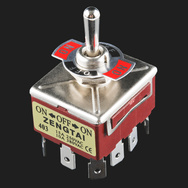
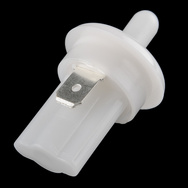
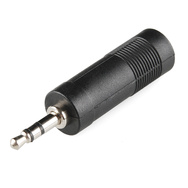
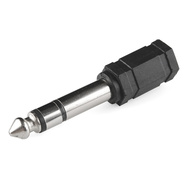

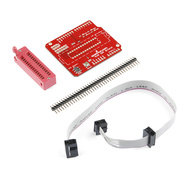
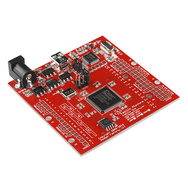
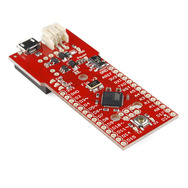
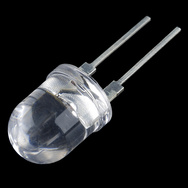
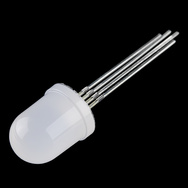







"Hopefully there's something in there that sparks your interest."
HAH! I see what you did there.
fixed.
One thing I hope the Papilio does is allow hobbyists to see the power of the FPGA and consider it for a project.
The problem with FPGAs for hobbyists is their complexity. There is a lot to consider for FPGAs. Examples are, pinouts (I/O), clock frequency, timing (making sure synchronous signals match up properly), power and layout, and the list goes on.
Edit: I don't want to scare anyone away from FPGAs. Give them a try. Just know, you're going to get frustrated (I always do), and keep pushing forward.
Food for thought: Your internet infrastructure basically runs off of them! Routers, switches, Cell towers, etc. They all have some kind of high bandwidth FPGA in them!
Just about everyone stocks 3.5mm stereo jacks. Great standard connector, but excitability factor? Meh...
What would be SUPER-sweet is a 4-POLE 3.5mm jack (and female adapter). With the 4 different conductors, you could create custom USB-to-3.5mm connectors, or really useful VCC/RX/TX/GND connectors. Not to mention the fact that you could actually break out the 4-pole stereo/mic on an iPhone/Android device. Any chance on getting some of these?
If I were the suspicious type I could think that you stole the idea of the of the arduino avr programmer from my email that I sent the 7th May last year and you replied on10th May that you said you weren't interested in the producing :(
Sincere apologies for that. SparkFun receives a huge volume of product suggestions, and we give serious thought to each proposal. Depending on the group consensus on that date, which involves an estimation of the market, what else we offer or have in development, and what else is currently out there, we'll either politely decline or pursue a collaboration. (Not many outside projects get picked, as we're already up to our eyeballs in our own designs).
Naturally with the volume of products we're pitched, we're bound to come up with nearly the same products from time to time (Hollywood studios will not even open unsolicited scripts for this reason). This particular board was a recent personal effort by our testing lead, and we thought it was cool enough to put on the storefront. I'm sorry that for some reason we didn't make the same decision when we looked at your earlier proposal. I can assure you no subterfuge was involved. We're serious about being good members of the maker community, and although in many cases we could technically use others open-sourced designs without compensation, we'd much rather give back and compensate the designers for their hard work. Again we're sorry for the unfortunate circumstances.
Given that it was almost a year ago I can see your point. I actually done something that I swore I wouldn't do online, rant in public rather then calm down and think, I just got a little frustrated. I apologise for doing that and do sincerely hope that the product does well, I may not be able to say 'I made that' but suppose I can say 'I thought of that' hehe :-)
How about some single pole - mult-throw switches for mode selection? I'm getting tired of using pushbuttons, counting presses and figuring out how to provide mode feedback. Simple tactile/spatial of a rotary switch (NOT an encoder) is great. Sure I could find them spelunking thru DigiMoser sites but here they would help get my wish list over the Buy threshold.
A rotary switch like this one? http://www.sparkfun.com/products/10064
I actually JUST used one of those this weekend for a project I'm working on. It's perfect for 'mode selection'. In my case, it indicates which lens you will be using with an automated pan/tilt panorama bracket.
I really like those big LEDs. I already have the red, green, and blue super bright ones, but I think I need to add a few of the others to my collection. Only problem is, I need to find a way to use all this cool stuff! This will be the summer of arduino!
Sparkfun... Please respect those of us who say that items like the Fio v3 - ATmega32U4 sku: DEV-11017
Are way overpriced.
More attention to overhead, margins, and other costs is needed.
In Sparkfun's defense, that isn't overpriced. I hear this complaint quite a bit and it's always from folks that have no electronics manufacturing experience. Well, I have quite a bit, and can tell you that at the rough quantities that item will sell, the price leaves a modest margin and that's it. These aren't toys produced with slave labor by the millions. It only seems fair for the folks making this product for you to make enough money to keep a roof over their heads and food on their tables. Sorry if this offends, but I'm really getting sick of the entitled whining.
Indeed, buying from SFE is certainly cheaper than DIY. I've been working on my own dev board that SFE have something similar to as a free time project. If we compare them… (bet this formatting doesn't work)
SFE sells the complete board for 54.95 USD, my component costs are 17.84 GBP from Farnell using either their highest or 2nd highest prices, i.e. small runs. That's about 28 USD. Now, obviously, the features don't match up exactly, but the costs are probably about the same. Then there's the PCB, I'm on my third revision now, which I'm hoping will be my last one. Revision 1 was very poor, not really usable. Revision 2 board are decent enough AVR dev boards, but their RF doesn't work, they don't have USB, and they require two greenwires. I got 1 and 2 made at BatchPCB, but tempted by a more local company for r3, if I find one good enough.
Now, if I were to use BatchPCB for my newest board revisions the cost would be 7.63 USD per board, so we get a total component cost of about 35 USD. That means that I can build boards with a marginal saving of about 20 USD. The thing is, I've been working on this project since November. I'm a softy so have had to learn a lot, and have bugged AVR people for help a lot. Not to mention the amount of people I've spoken to about the RF tuning. I've read about 600 pages of datasheets. Now, don't get me wrong, it's been fun, and I've learnt a lot, but I'm not doing this for a 20 USD saving. If you include the money I've spent so far on prototyping (although, granted, I have spare components for when I get my r3 boards) I'm at 263 USD. I'm not going to include tools, but I needed to upgrade to a proper soldering station, get haemostats, loupe, etc too.
In total, then, ignoring the time I put into it I'm going to have to have to make 14 boards for this to be worth the money investment. I'm not going to do that. Hell, the ones I make might not even be as good as the SFE boards. Now, I'm an amateur, and this board has RF, it might be an extreme example. But I really don't think that unless you can make high quality PCBs at home (i.e. dual layer that can handle SMT), that you're going to be able to beat the prices.
This is just about the best breakdown I've seen as to why SparkFun exists: we sell shortcuts. You can build it the breakout board yourself (we'll show you how!) or you can build your project and leave the smaller projects (breakout board building) to someone else (hopefully SparkFun!).
That's an excellent example! Between myself and Paradoxial, we design most of our own boards ( www.pygmyos.com ). I've been doing this for over a decade and have found Sparkfun to be an excellent source for many breakout boards. Unless I want to build over a dozen, I'm not very likely to spend the time and money to re-invent the wheel if I can get it from SF. Sometimes the tiny savings up front just isn't worth the loss of time or the end cost.
If you don't like the price, then design and/or assemble your own board. That's actually one of the reasons I got into circuit design.
I'm sure Sparkfun appreciates the free advice, stevech. It's worth every penny they paid for it. Like MightyDubster, I have experience manufacturing devices of similar complexity. The prices are reasonable. I suspect you know as much about margin, "overhead" and "other costs" as you do about manufacturing.
If you can find what you're looking for at a better price somewhere else, buy it. Don't want to pay Sparkfun's price? Don't buy it. It's not a difficult concept.
I do a lot of R&D and proof of concept prototypes for my clients and boards like the FIO and all the breakout boards offered by Sparkfun are a real money and especially time saver. If I had to duplicate the functionality in house just to try the proper technology in developing a concept or idea for a client. Even for in-house projects or just plain fun stuff I do it is also way more cost-effective for me to use the tested products available here than develop my own solutions from scratch. Of course when my client's project go to production or I will need to build more than a dozen or so of my in-house projects it is another matter. Even then depending on volume and how often I need to build something, Sparkfun parts might be better too. Your mileage might vary, but unless you do not put any value on your time building something it is still a reasonable price...
A 1/4" male-to- 1/8" Female is shown in the image for the audio jack adapter. Image boo-boo? Or was that intentional?
Disregard.....its morning and I just had a brain fart.
Its hard to find if the description is above the picture of product or below.
Why cant there be some space between each set ? Better still, why cant the description be on side of the picture. Finally, why cant the font be bigger ?
World would be so much better if only websites realized displays are getting wider not taller :(
I guess I made my weekend by starting a flame ?
You could always just spend the 5 seconds reading the description and then another 2 seconds to decide which picture it goes to.
And you can spend an additional 10 seconds and change your monitor resolution, or your browser font size so it's easier for you to read. All of them are user customizable. No need to have it affect everyone else who may or may not have the same problem you're having.
So are you guys saying that adding some space between each pair will cause problems for some ? If not, then sparkfun might as well go with the improvement. Then you guys can spend 0 seconds to ignore the space. Much better than having others read 2 descriptions to know what 1 picture shows.
Good UI designer should not assume user can/will 'always' spend 5/10 seconds to fix it for him.
My response has nothing to do with space, but more to do with your comment about small fonts. They're not small for me, and I have a rather high resolution on my monitor. I don't hear anyone else complain about them. If people more were complaining, I'm sure they'll do something about it. Since, as of right now, you are the only one who has a problem with it, my suggestion is for you to change your resolution. As I said, it's USER CUSTOMIZABLE, so take advantage of that and do yourself a favor. And don't proceed to assume I don't know anything about it either, because I am a web developer as well.
I gave several ideas to fix the same basic issue. Adding space was the dumbest of them. Its upto sparkfun to see if it wants to do it or not. I dont agree I am the only one complaining, I have seen others complain too. My resolution is always set to the maximum the industry can provide today. Finally, USER CUSTOMIZABLE should not be confused with USER FIXABLE :)
Basically... It's REALLY basic...
Of course, NOW you post the Papilio, after I had to spend my Freeday Credits. I was holding out until the last day, hoping you would post some FPGA board. Oh well :P
i was waiting for him to say it was a good switch up on products at the end but o well
Usually car door switches are normally closed I believe. That allows them to turn on an interior light when the door is open (switch closed) and shut it off when door closes (switch open). Just thought I would throw that out there since you referenced car door switches.
The car door is normally closed i believe...
Yes the car door itself is normally closed so when its closed the switch is open. So in a car door switch when you open the door the switch closes and lets 12v flow to the dome light.
Close the door light goes out just like your frig door. This switch would only work if it was attached to some logic circuit.
I have replaced door switches and its a pretty simple NC switch.
http://image.made-in-china.com/2f0j00HMKQNjvrEebt/Car-Door-Switch-Auto-Door-Switch-Car-Accessories-Automobile-Parts.jpg
I would think it would be the other way around (the way Robert said it). If car door switches are NC, then if there is a bad connection to the switch, it would appear that the door is closed (potentially bad situation!). It's easy enough to invert a high low signal, especially with relays.
You can think of this one like a safety switch - you don't want the laser cutter to operate when the door is open, but when you close the door the switch closes and turns on power. And of course if you're using it for a logic input as MatthewR says you can program the logic any way you want.
After a few Google searches, I believe car door switches are normally closed.
The SatUplink Shield Is a total game changer! Excellent work Sparkfun.
Hey thanks! I'm pretty happy to see it live.
I was looking at building something similar with an Iridium 9602 SBD transceiver for a research project. I wouldn't suppose there is a way to transmit "to" the shield is there? Or is there plans for a full satellite telemetry shield in the works?
Finnnnaaalllyyy!!! I was afraid that today will be no NFP... Thank you for saving my life;)